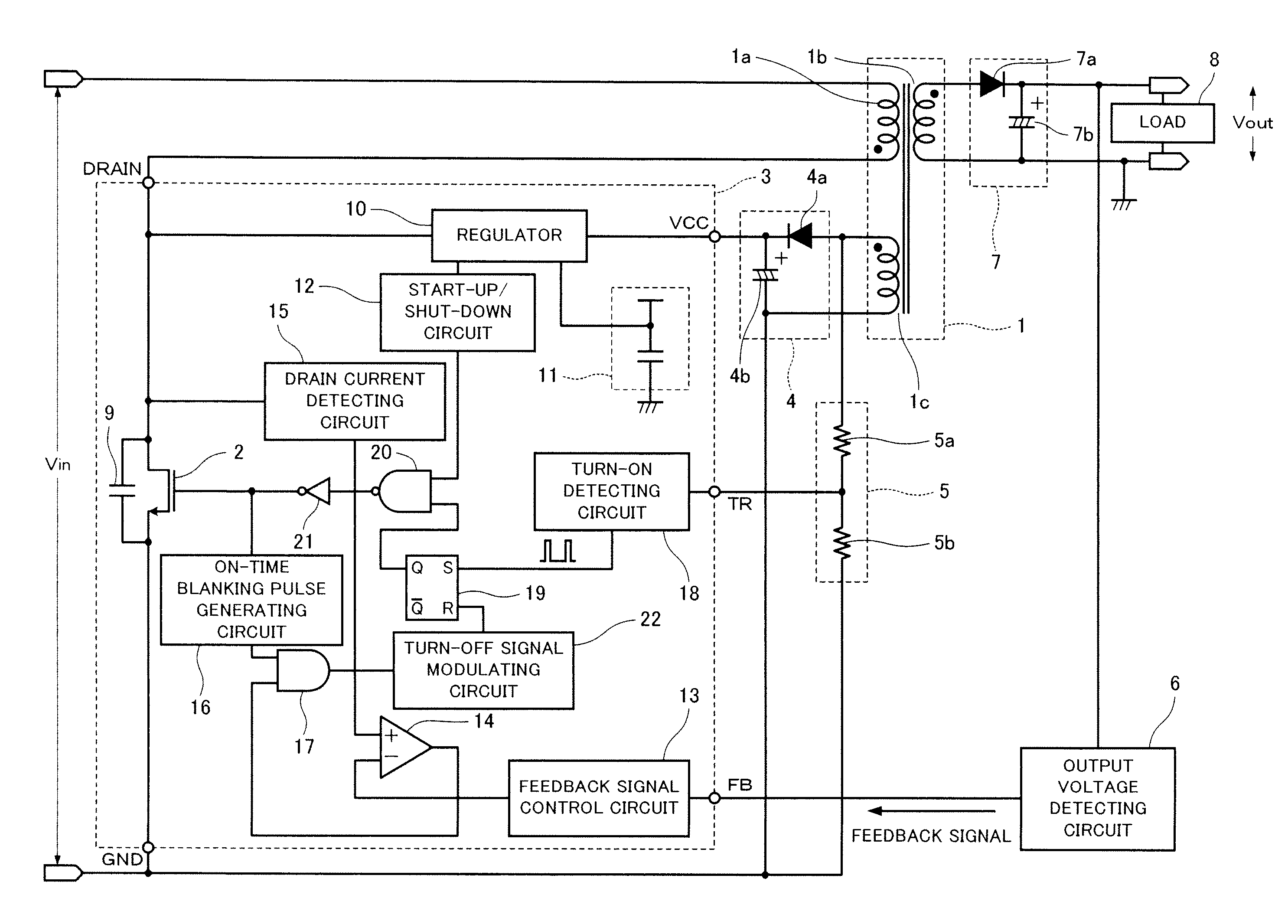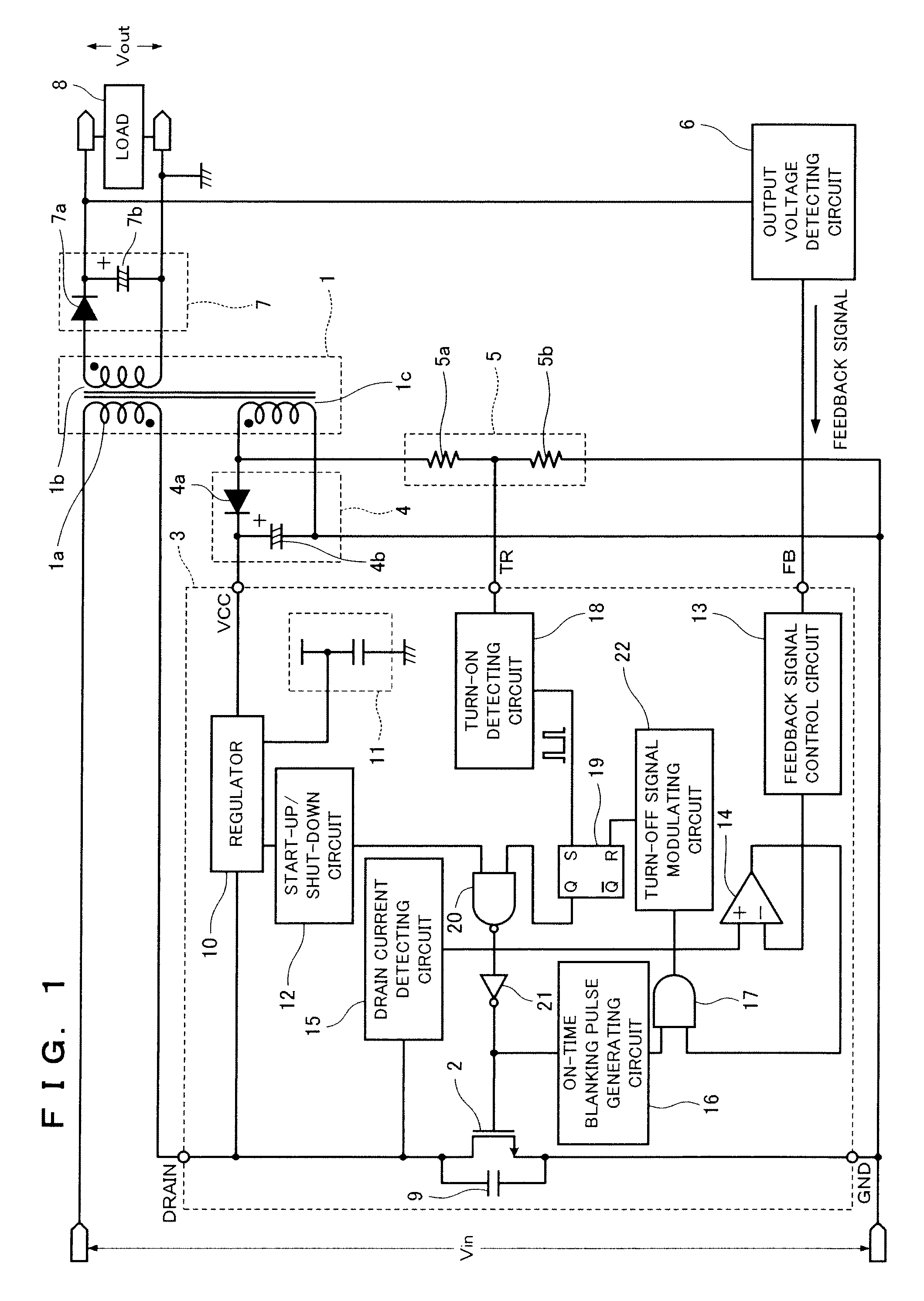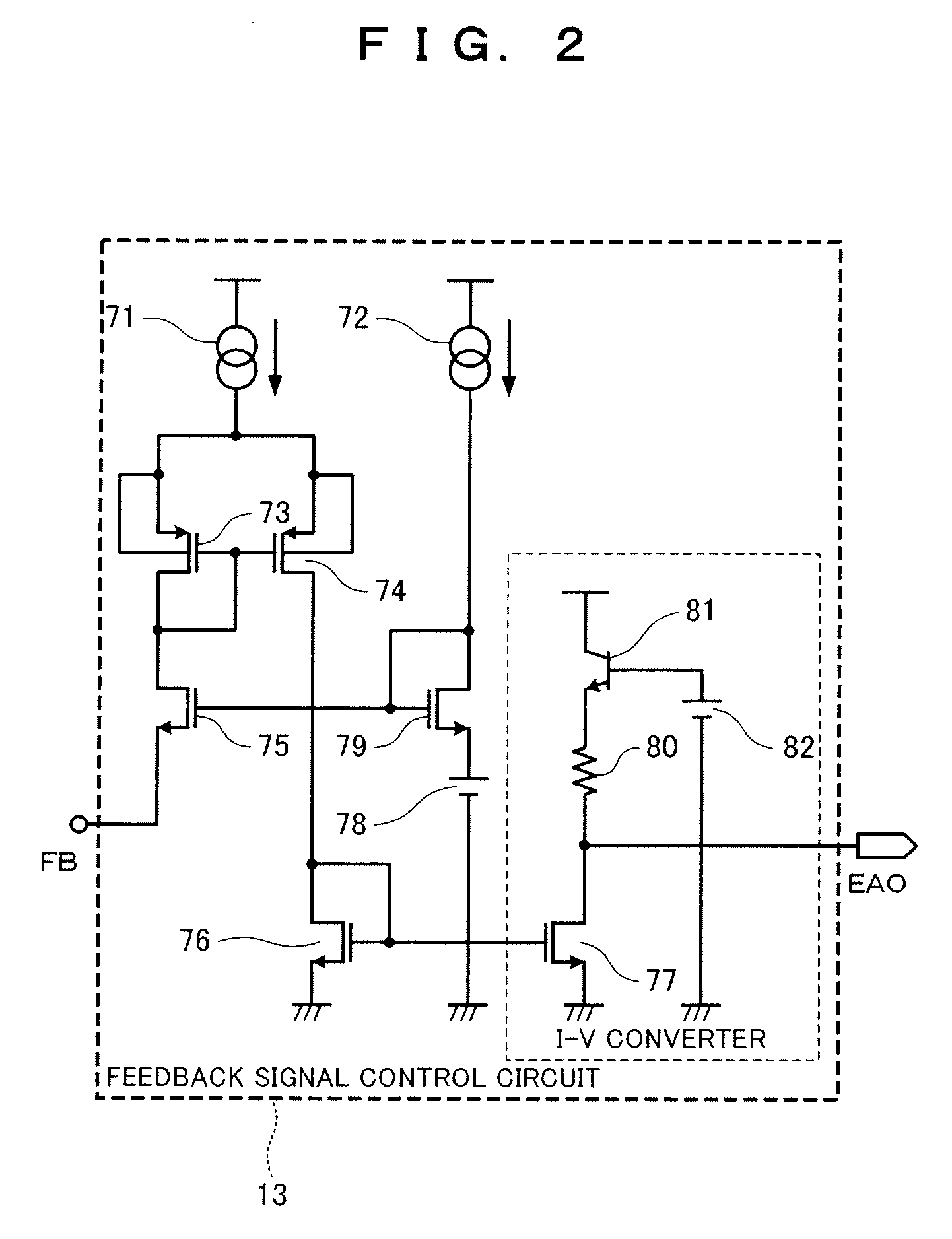Energy transfer device and energy transfer control semiconductor device
a technology of energy transfer device and semiconductor device, which is applied in the direction of dc-dc conversion, power conversion system, instruments, etc., can solve the problems of difficult effective suppression of switching noise, malfunction and failure, and adverse effects on other electronic devices, so as to reduce the size and cost of the device
- Summary
- Abstract
- Description
- Claims
- Application Information
AI Technical Summary
Benefits of technology
Problems solved by technology
Method used
Image
Examples
first embodiment
[0087]An energy transfer device according to a first embodiment of the present invention will be described.
[0088]FIG. 1 is a circuit diagram showing a configuration example of the energy transfer device including an energy transfer control semiconductor device according to the present first embodiment.
[0089]In FIG. 1, a transformer 1 includes a primary winding 1a, a secondary winding 1b, and an auxiliary winding 1c. The primary winding 1a and the secondary winding 1b have reverse polarities. This energy transfer device, i.e., a switching power supply, is of a flyback type.
[0090]A switching element 2 is connected to the primary winding 1a. On / off switching control of a control electrode (gate) of the switching element 2 is performed by an output signal of a control circuit 3.
[0091]The control circuit 3 that is a semiconductor device includes the switching element 2, whereby the switching element 2 constituted by a power MOSFET or the like is integrated on the same semiconductor subst...
second embodiment
[0161]Next, an energy transfer control semiconductor device according to a second embodiment of the present invention will be described.
[0162]FIG. 7 is a circuit diagram showing a configuration example of an energy transfer device including the energy transfer control semiconductor device according to the present second embodiment. In comparison with the first embodiment, in the present second embodiment, a signal is inputted from a feedback signal control circuit 23 to a turn-off signal modulating circuit 22. A primary object of the present second embodiment is to modulate a delay time tf(t) by the turn-off signal modulating circuit 22 in accordance with a feedback signal or, in other words, depending on a load condition of an output voltage Vout.
[0163]Since a description of operations is similar to the first embodiment described above, only modifications will be described hereafter. In addition, reference numerals are omitted for elements already described in the first embodiment....
third embodiment
[0176]Next, an energy transfer control semiconductor device according to a third embodiment of the present invention will be described.
[0177]FIG. 10 is a circuit diagram showing a configuration example of an energy transfer device including the energy transfer control semiconductor device according to the present third embodiment. In comparison with the first embodiment, in the present third embodiment, a control circuit 3 has been provided with an LS terminal and a resistor 30 is inserted between an input voltage Vin and the LS terminal.
[0178]In addition, a current inputted to the LS terminal from the input Vin via the resistor 30 is to be inputted to an input voltage detecting circuit 24 and a signal in accordance with the current value is to be inputted to a turn-off signal modulating circuit 22, and a primary object of the present third embodiment is to modulate a delay time tf(t) by the turn-off signal modulating circuit 22 in accordance with the magnitude of the input voltage ...
PUM
 Login to View More
Login to View More Abstract
Description
Claims
Application Information
 Login to View More
Login to View More - R&D
- Intellectual Property
- Life Sciences
- Materials
- Tech Scout
- Unparalleled Data Quality
- Higher Quality Content
- 60% Fewer Hallucinations
Browse by: Latest US Patents, China's latest patents, Technical Efficacy Thesaurus, Application Domain, Technology Topic, Popular Technical Reports.
© 2025 PatSnap. All rights reserved.Legal|Privacy policy|Modern Slavery Act Transparency Statement|Sitemap|About US| Contact US: help@patsnap.com



